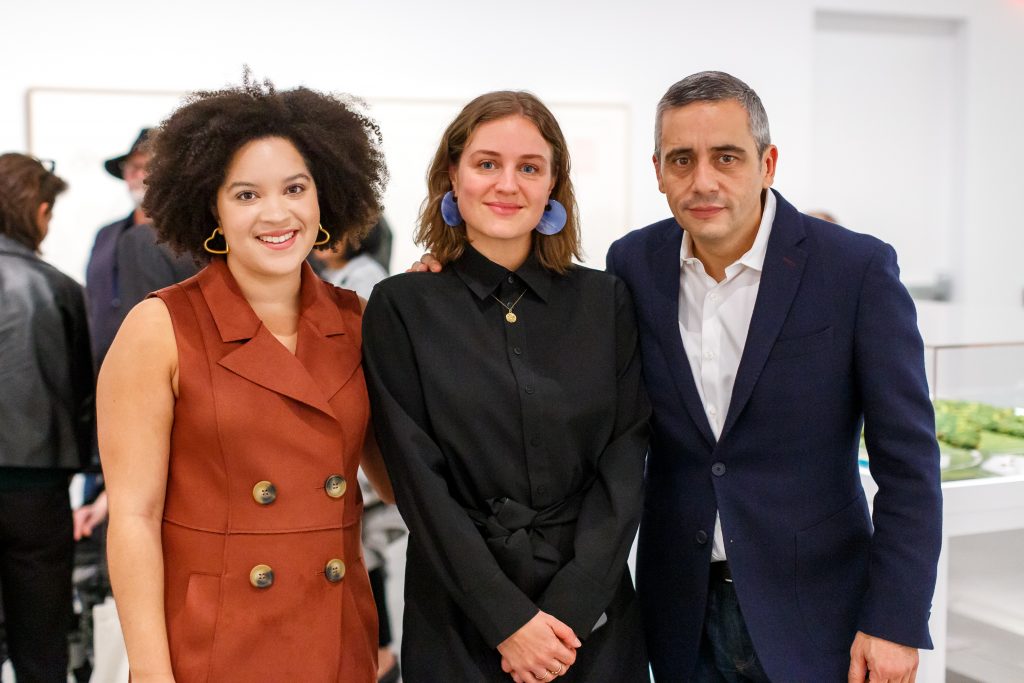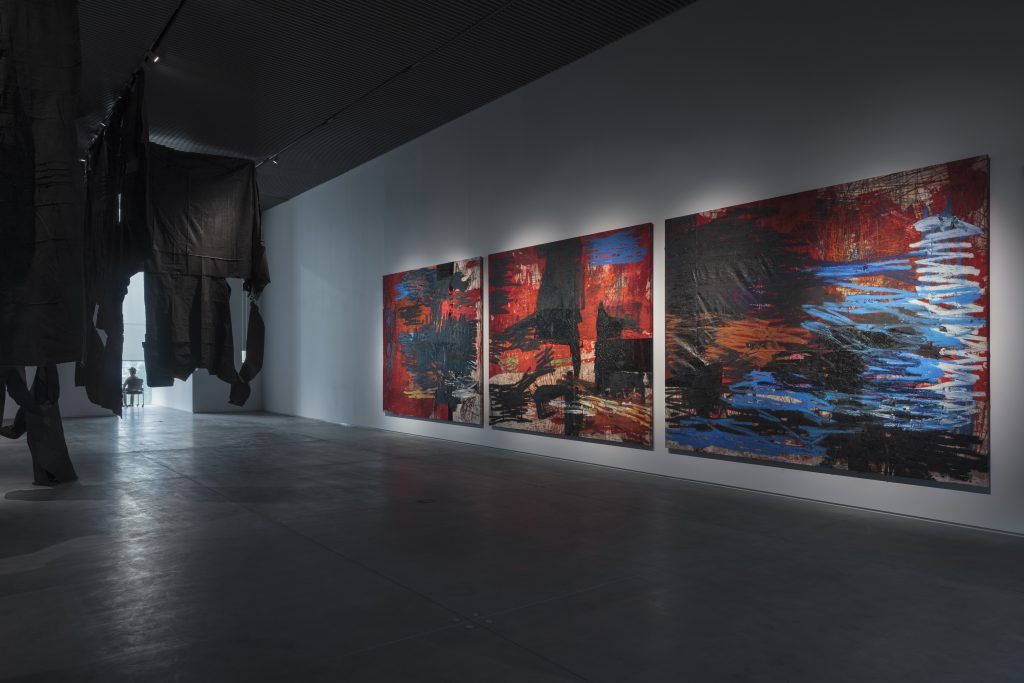← Back
Emma Enderby, Senior Curator, The Shed
Interview, 4 December 2019
As senior curator at The Shed, New York City’s newest and most talked about art hub, Emma Enderby is spearheading a new way of showcasing promising and established contemporary artists across a multitude of disciplines.
In a city whose hard-to-impress residents claim to have seen it all, it takes something extraordinary to catch their attention. The newest addition to the New York art scene is aiming to do just that. And judging by its inaugural year, it has met and exceeded the highly set expectations.
The Shed opened its doors in the spring of 2019. As a non-profit organization located on city-owned land on the perimeter of the bombastic and controversial real estate development, Hudson Yards, on Manhattan’s west side.
A $475 million design by the firms Diller Scofidio + Renfro and Rockwell Group, The Shed serves as the first multi-arts center in the city designed to commission, produce, and present all types of performing arts, visual arts and popular culture.
The futuristic space contains a main performance stage with a capacity of around 3000, plus two levels of exhibition space spread over 25,000 square feet.
Not since the inauguration of Lincoln Center in 1962 has New York had such an impactful, diverse and progressive art space open its doors to the public.
The program at The Shed focuses on international collaborations as well as creating a space where local talent can flourish and find a place to showcase their work and ideas. Since the spring, the program has included Verdi’s Requiem, “Soundtrack of America” a history of African American music (directed by Academy Award-winning film maker Steve McQueen), performances by artists such as Björk, and art exhibits by Agnes Denes, Oscar Murillo, Tony Cokes, to name a few.
In 2017, two years before the scheduled opening, The Shed appointed Emma Enderby as senior curator.
Having studied, worked and made a name for herself in London, Enderby moved to New York where she went on to work at MoMa and Public Art Fund, prior to being hand-picked for her current role at The Shed.
We caught up with Emma to find out more about the mission of The Shed, New York artists battle for survival in one of the most expensive cities in the world – and why finding a community can be integral in order to succeed in today’s art world.

Photo: Brett Beyer
What is the main mission of The Shed and what do you envision its role will be in American contemporary art going forward?
– The mission of The Shed is to commission new works of art, across all disciplines, for all audiences. Our range is diverse, from visual art exhibitions and live productions to socially engaged civic programs. I hope we will continue to be a space where artists can experiment with new mediums and cross-disciplinary collaborations, which we are seeing more and more of in their practice.
You were born and raised in Britain but have worked within the field of art in the US for a few years. What was the road to becoming an art curator like for you?
– It’s a road I am still on! I didn’t study art history initially. I studied ancient history and classics, but I started to become interested in thinking about history through objects rather than words. I also wanted to time-travel, to think about the way history doesn’t need to be linear. Contemporary art allows for this form of exploration and I became obsessed with artists who explored that. So, I went on to do my master’s in art history and from there, I started at the bottom as a curatorial intern and over ten years worked my way up to where I am now. It was a combination of hard work, perseverance and luck.

Intermediates at The Shed.
With curatorial assistant Adeze Wilford (left) and Alex Poots, The Shed’s Artistic Director and
CEO (right)
“I studied ancient history and classics, but I started to become interested in thinking about history through objects rather than words”
The Shed has had some amazing exhibitions and shows so far, often in multi-disciplinary genres; was there ever a worry that the average visitor would find it a little “all over the place”?
– Of course, and we are still working on ways to best communicate what we do. I think it will take time. We try to explain that commissioning is at the heart of what we are trying to do. What unites our mission across all programs is that there is always an element that was newly made for The Shed, even in a retrospective exhibition like Agnes Denes: Absolutes and intermediates.
I understand that bringing forward local and contemporary talent is a beacon for you. How do you see the state of emerging young artists in America?
– America is an incredible place to find emerging artists. Places like NYC and LA are still international beacons, but there are also so many dynamic art communities all over the country. It’s imperative we find ways to support them, as these artists are often the essential critical voices exploring the, often fraught, dynamics of our time.

Oil, spray paint, and oil stick on canvas and linen.
Photo: Stan Narten. Courtesy the artist and David Zwirner
Artists and creatives are finding it increasingly difficult to afford living in New York.
Do you think there is a risk that young artists struggling to be able to live and work in the city could relocate in coming years?
– It’s already happening, and has been for some time. It’s not a risk but a reality.
With these issues in mind, you developed a program for young artists
called “Open Call”; can you describe the context of this initiative for us?
– The Shed is a civic institution on city-owned land. Acknowledging this privilege, it is our goal and responsibility to invest in and support New York City residents. One way The Shed could do this was to commission emerging artists based here. This is where the idea for Open Call came from: a large-scale commissioning program dedicated to developing and presenting new works from NYC-based artists who had not yet received major institutional support. This year, panels of leaders in a wide range of disciplines, from the visual arts to digital media to theater and dance, reviewed more than 900 proposals for Open Call. We selected 52 emerging artists and collectives to receive between $7,000-15,000 in commissioning fees, support, and resources to develop their projects for The Shed in our various spaces. The theater, the gallery and the outdoor plaza.

The Shed, New York, October 9, 2019 – March 22, 2020.
Photo: Dan Bradica. Courtesy The Shed.
“These artists are often the essential critical voices exploring the, often fraught, dynamics of our time.”
Having worked closely with emerging artists over the years; what would be your best advice to someone within the arts trying to make their mark today?
– Find or form a community. Show each other’s work in artist-run spaces, support each other, share opportunities, talk about each other to curators, critics, etc. It’s often how word travels and everyone needs a support network.
What do you look forward to the most going into your second year?
– Aside from our program, which I think is really dynamic and utilizes our spaces in different ways, I look forward to the institution as a whole entering its second year of operation. In April 2020 we will be one year old! And I know that Year Two will bring as much growth and adjustment as did Year One.
For more please visit: theshed.org